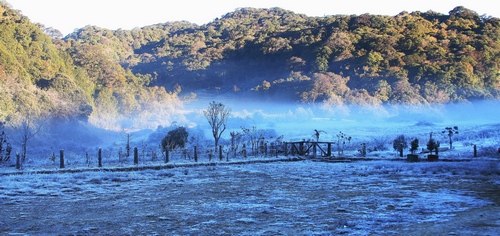Subtropical evergreen forests represent the transition between temperate and tropical forests, with a year-around growing season and cold winter. These forests are facing strong pressures related to human disturbance and global climate change; unfortunately, little is known about the dynamics of these processes.
Researchers from XTBG, SCBG, and National Dong Hwa University of Taiwan incorporated eddy covariance flux observations, soil respiration, and leaf-level measurements to determine whether primary production (GPP) or total ecosystem respiratory carbon loss (ER) is more sensitive to climate warming in three typical subtropical evergreen forests (Chilanshan in Taiwan; Dinghushan in Guangdong and Ailaoshan in Yunnan)in East Asia. They also examined why GPP or ER is more sensitive at those locations.
Their study found that there was an obvious seasonal trend in leaf maximum CO2 assimilation. Strong seasonal pattern was observed in soil respiration. Those three forest sites act as continuous, year-round carbon sinks, represented by negative values of the net ecosystem exchange (NEE) of carbon, even during winter. Trees not only avoided injury during low winter temperatures, but also maintained continuous photosynthesis. Gross ecosystem exchanges (GEE) of all three forests were higher in summer than in winter, but were limited in response to reduced solar radiation related to increased cloud formation.
Temperature is key factor in the inter-sites differences in net ecosystem exchange (NEE). Warming would reduce NEE and weaken the existing carbon-sink function.
Thus, the researchers concluded that increased temperature will weaken the carbon-sink strength of East Asia subtropical evergreen forests.
Nevertheless, temperature is only one of the factors related to regional and global climate change. The researchers hadn’t considered elevated CO2 in their experiments, which could have dramatically altered the findings.
The study entitled “An observational study of the carbon-sink strength of East Asian subtropical evergreen forest” has been published in Environmental Research Letters, 2012 (7 ): 044017, doi:10.1088/1748-9326/7/4/044017

Scenery of Ailaoshan in Winter (Image by Zhang Yongjiang)

